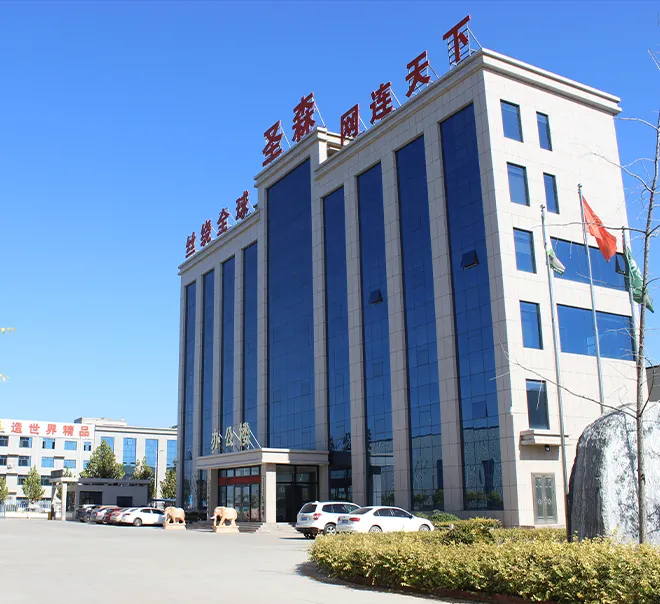-
 Phone:
Phone: -
 Email:
Email:

Exploring the Versatility and Uses of Baling Wire in Various Industries
The Versatility of Baling Wire An Essential Tool in Various Industries
Baling wire, often overlooked in discussions about industrial materials, plays a crucial role in numerous sectors, especially in agriculture, recycling, and manufacturing. This sturdy wire is primarily used for binding bales of hay, straw, and other materials into manageable and transportable forms. However, its applications extend far beyond that, making it an essential tool for various industries across the globe.
What is Baling Wire?
Baling wire is typically made from high tensile steel or galvanized wire, ensuring it possesses the necessary strength and durability to securely hold bulky materials. The wire is available in different gauges and strengths, depending on the weight and type of the bales being formed. The most common uses of baling wire can be seen in farms, recycling facilities, and factories, where it helps streamline processes and improve efficiency.
Applications in Agriculture
In agriculture, baling wire is indispensable for farmers who produce hay and straw. Bales must be tightly secured to prevent them from falling apart during transport or storage. The wire ensures that the bales maintain their shape and integrity, preventing loss of material and ensuring that the farmer can maximize profitability. Different types of baling wire exist for different applications for example, heavier wire is often used for larger bales, while lighter wire may suffice for smaller loads.
Additionally, baling wire is not restricted to just hay and straw. It is also utilized in the packaging of other agricultural products, such as cotton or silage. Farmers appreciate its versatility and reliability, as they can depend on this simple yet effective tool to tie together their produce securely.
Role in Recycling
In the recycling industry, baling wire becomes an essential component in the processing of recyclable materials, such as paper, cardboard, and plastic. Once the materials are collected and processed, they are often compressed into bales to optimize storage space and facilitate transportation. Baling wire is used to secure these bales, ensuring they remain intact during transit to recycling facilities.
Moreover, the use of baling wire aids in the efficient operation of recycling plants. Workers can quickly and effectively bind recycled materials, speeding up the process and allowing facilities to handle larger volumes. As recycling becomes increasingly important in today's world, baling wire directly contributes to environmental sustainability by supporting the efficient management of waste materials.
baling wire

Manufacturing and Construction Uses
Beyond agriculture and recycling, baling wire finds its place in various manufacturing processes. It can be used for bundling products, securing loads during shipment, and even as a component in machinery. Its strength and adaptability make it a go-to solution for many logistical challenges faced by manufacturers.
In construction, baling wire can serve multiple purposes from tying together insulation batts to securing wiring bundles, this multipurpose tool is invaluable on job sites. Contractors often keep baling wire in their toolkits for its utility in quick fixes or temporary holds while more permanent solutions are implemented.
Economic Benefits
The economic impact of baling wire cannot be understated. It provides an affordable solution for binding materials across industries, helping businesses lower their operational costs. The strength and durability of baling wire mean fewer replacements are necessary, resulting in further savings.
Moreover, the ease of use associated with baling wire allows workers to optimize their time and labor. Quick and simple binding means less downtime and more efficient workflows, which ultimately translates to better profitability for businesses.
Environmental Impact
Finally, it's worth noting the environmental implications of using baling wire. With the growing emphasis on sustainability, efficient bundling and handling of recyclable materials are more crucial than ever. By supporting recycling initiatives and contributing to waste reduction, baling wire plays a role in fostering a more sustainable future.
Conclusion
In conclusion, baling wire may seem like a mundane industrial tool, but its significance across various sectors cannot be overstated. From agriculture to recycling and manufacturing, it serves a multitude of essential functions that help drive efficiency and sustainability. As industries continue to evolve, baling wire will undoubtedly remain a valuable asset in our efforts to optimize processes and support economic growth.
-
Wire Mesh for Every Need: A Practical SolutionNewsJul.25,2025
-
Steel Fences: Durable, Secure, and Stylish OptionsNewsJul.25,2025
-
Roll Top Fencing: A Smart Solution for Safety and SecurityNewsJul.25,2025
-
Cattle Farm Fencing Solutions for Maximum SecurityNewsJul.25,2025
-
Affordable Iron Binding Wire SolutionsNewsJul.25,2025
-
Affordable Galvanized Wire SolutionsNewsJul.25,2025
-
Wire Hanger Recycling IdeasNewsJul.25,2025








